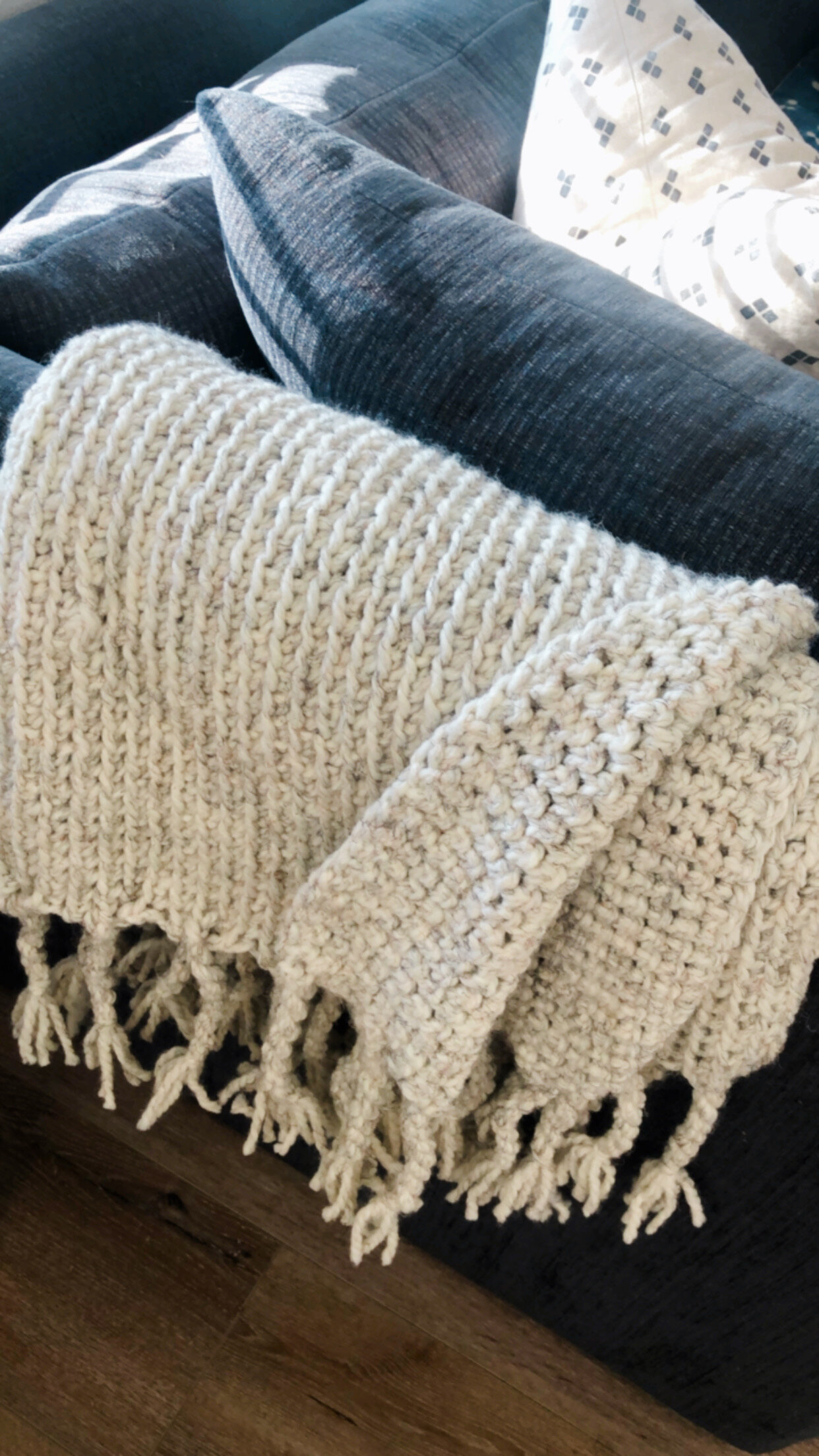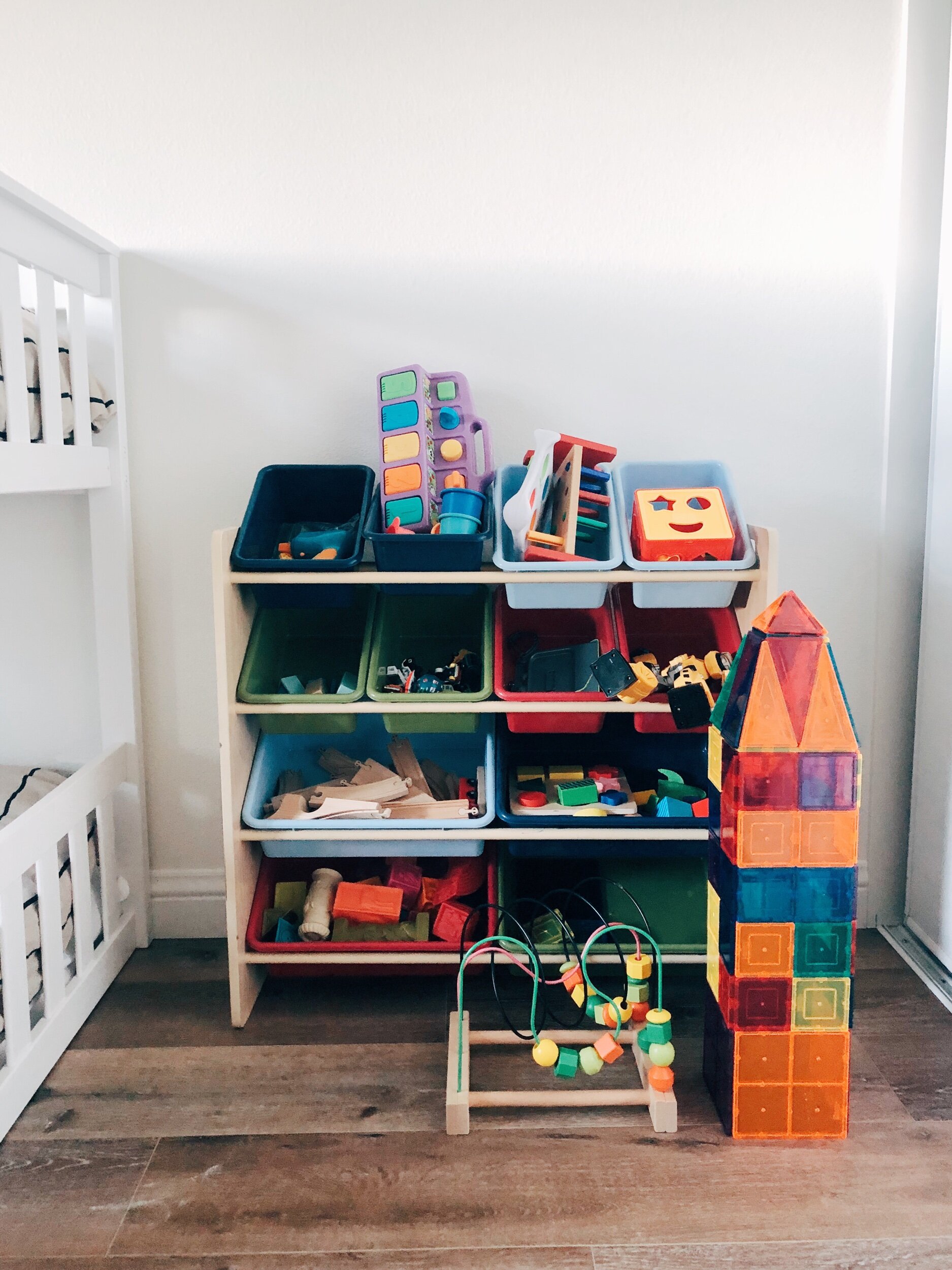For many homes, the entryway is the first space you see after walking in your front door or the last space you see before walking out. This space acts as both a drop zone and the first look at your home—it needs to be functional, and ideally, it’s pretty, too! While there are myriad ways to decorate an entry, I’ll share what worked for me.
Start with Three Foundational Pieces
Foundational piece #1: A console table or bench
The space that acts as our entryway is to the left of our stairs, to the right of our hallway closet and faces the dining room. Because the hallway that separates it from the dining room is not wide, I knew that we couldn’t go with bulky or deep furniture that would interfere with the walking space. I toyed with the idea of going with a bench as a sitting area to put on shoes, but decided that the kids could use the stairs for that and instead chose a narrow console table.
Questions to ask yourself: What do you have room for? What’s the best use of the space—as a sit-down drop zone or an upright one? Do you need extra storage in this space?
Foundational piece #2: A mirror or statement art piece
The wall behind the console table was large and empty, so I knew I could go big here. Since I already have a gridded gallery wall of family photos in our living area and an art gallery wall in our piano room, I decided on a large mirror.
A mirror acts to both visually enlarge the area and serve as a “last look” space to check your makeup before you run out the door, so it’s pretty and practical. If you already have a mirror in a different space, a statement art piece is another great option.
Foundational piece #3: A basket, tray or low bowl
I am a basket queen. I use them everywhere in the house to corral toys, shoes, mail, keys, and other small items. A basket serves as a catchall to throw in keys, sunglasses or a wallet as you are coming in the door, and a tray or low, decorative bowl could do the same. I also have a larger basket next to the console table for guests to place their shoes as they come in.
Think in Three Visual Layers
A Statement Layer
The statement layer is the top third to top half of your entryway wall space. This is the space taken up by your mirror or art piece. You might choose to install a sconce above your mirror or flanking either side—as a way to add additional sources of light if you need it.
A Shelf Layer
This is the linear space where your basket or tray and decorative items—vases, lamps, smaller leaning art pieces, stacked books, candles— will live. Mix in tall, vertical elements like vases or lamps to add balance to the space.
A Grounding Layer
This is the bottom third to the bottom half of the space that visually grounds the vignette. Literal heavy and visually weighty items go here. If you have a bottom shelf to your console table like I do, make sure you choose items with height so you aren’t left with a blank gap between the bottom shelf and where your drawers begin.
Layer in Three Elements
I love incorporating books and framed photographs wherever I can in a room, but there are three other elements that I try to keep in every vignette—
A Pop of Black
I recently learned that there’s a reason why designers incorporate black into spaces—because it keeps your eye moving. But I’ve always loved incorporating black because it adds a layer of contrast that’s visually interesting, and it manages to be both a neutral and the opposite of a neutral at the same time.
Something Woven
Incorporating something woven gives texture and dimension to a space. It’s one of the reasons I keep all sorts of baskets on hand. You can also incorporate texture by incorporating vases or lamps with subtle lines or grids.
Greenery
Greenery, fake or real, adds an element of freshness. We pick up greenery from our local farmers’ market every Sunday.
By dividing a space into elements and layers, it becomes easier to take a phased approach to decorating. Start by gathering your foundational pieces, decorate by layer, then add finishing touches.
Frame (also comes in a walnut!)
Baskets and shoe basket
*some items are affiliate linked and some are non-affiliate linked. If you choose to purchase an item, I may receive a small commission at no extra cost to you.
















